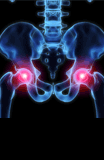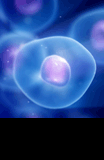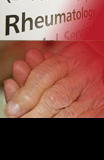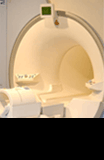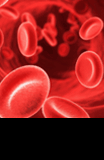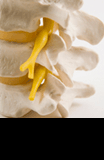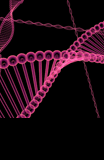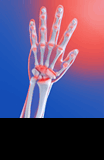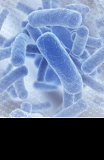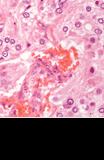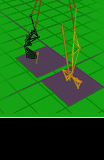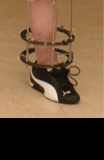Karyotyping (G-banded analysis)
Karyotyping, or G-banded analysis, involves the microscopic examination of the chromosomes. This test can detect loss or gain of material from any region of any chromosome. In addition, karyotyping can detect both balanced and unbalanced structural rearrangements such as translocations and inversions.
Living cells are required for cell culture to produce the chromosome preparations. Hence, frozen or fixed material cannot be processed.
As this test examines the chromosomes microscopically, the level of detail is limited by the resolution of the microscope and imbalances of ~5Mb or greater can be detected.
Karyotyping is a front-line test to detect balanced structural chromosome rearrangements such as translocations and inversions, and to investigate sex chromosome abnormalities or mosaicism.
NHS England National Genomic Test Directory codes
NHSE funded test referrals should be in accordance with the National Genomic Test Directory for rare disease and meet eligibility criteria: National Genomic Test Directory - NHS England.
- R297 Possible structural chromosomal rearrangement requiring karyotype
- R265 Individuals with possible mosaic chromosome abnormality requiring extended count karyotype
- R314 Ambiguous genitalia presenting neonatally (should be used to establish karyotypic sex in urgent neonatal situations)
- R402 Premature ovarian insufficiency
Single Nucleotide Polymorphism microarray (SNP Array)
SNP arrays involve:
- hybridisation of patient DNA to a target sequence on a glass slide
- a labelled fluorescent probe is introduced at the complementary SNP position
- a laser scanner is used to measure the fluorescent intensity of the probes bound to the patient sample, which is compared to a reference file
- the fluorescence intensity provides information on both the copy number and the SNP genotype.
This technique allows examination of the whole genome in greater detail than is possible by karyotyping and has a minimum resolution of approximately 15kb in OMIM gene regions. The analysis software allows cross referencing to international databases to allow identification of the genes in the region of imbalance.
This test is primarily undertaken on blood and fetal loss samples (please discuss with the laboratory for other sample types).
This test detects chromosomal imbalance (copy number gain and loss) and can be used to further define the breakpoints and gene content of known unbalanced chromosome abnormalities. This test also provides information on ploidy levels and can detect copy number neutral absence of heterozygosity (AOH). This test does not detect balanced rearrangements.
Microarray analysis is a front-line test for developmental delay / congenital malformation and fetal loss referrals.
NHS England National Genomic Test Directory codes
Common referrals
- R22 Fetus with a likely chromosomal abnormality
- R28 Congenital malformation and dysmorphism syndromes
- R343 Chromosomal mosaicism - microarray should be used where a microarray is indicated
- R318 Recurrent miscarriage with products of conception available for testing
- R377 Intellectual disability
Other referrals
- R27 Congenital malformation and dysmorphism syndromes - microarray and sequencing
- R29 Intellectual disability - microarray and sequencing
- R59 Early onset or syndromic epilepsy
- R69 Hypotonic infant
- R83 Arthrogryposis
- R84 Cerebellar anomalies
- R86 Hydrocephalus
- R87 Cerebral malformation
- R88 Severe microcephaly
- R89 Ultra-rare and atypical monogenic disorders
- R100 Rare syndromic craniosynostosis or isolated multisuture synostosis
- R137 Congenital heart disease
- R146 Disorders of sex development
- R147 Growth failure in early childhood
- R199 Congenital anomalies of the kidney and urinary tract (familial)
Fluorescence In Situ Hybridisation (FISH)
FISH is the microscopic examination of either interphase cells or chromosomes for the presence or absence of a fluorescently tagged probe. The probe can specifically target a region of a chromosome containing the genes for a particular genetic syndrome or condition (e.g. examination of 22q11 for DiGeorge syndrome or outflow cardiac abnormalities).
Each FISH probe is specific to a region of DNA (and associated syndrome) and, therefore, the syndrome or region for investigation must be specified on the referral card.
FISH investigations are available for most microdeletion syndromes and conditions.
FISH can be undertaken on preparations from cultured or uncultured cells.
FISH is a front-line test for developmental delay / congenital malformation referrals. It is also commonly used in family follow-up studies and to investigate possible mosaicism.
NHS England National Genomic Test Directory codes
- R26 Likely common aneuploidy
- R298 Possible structural or mosaic chromosomal abnormality requiring FISH
- R314 Ambiguous genitalia presenting neonatally should be used to establish karyotypic sex in urgent neonatal situations
Quantitative Fluorescence PCR (QF-PCR)
QF-PCR measures the number of alleles for specific regions of DNA and, by examining a series of alleles along a specific chromosome, the copy number for that chromosome can be established.
This test is used as a rapid test to screen samples from new-born babies for trisomy of chromosome 13, 18 or 21 or in cases of ambiguous genitalia. It may also be used for fetal losses where SNP array studies fail.
NHS England National Genomic Test Directory codes
- R22 Fetus with a likely chromosomal abnormality
- R26 Likely common aneuploidy
- R314 Ambiguous genitalia presenting neonatally
- R318 Recurrent miscarriage with products of conception available for testing




